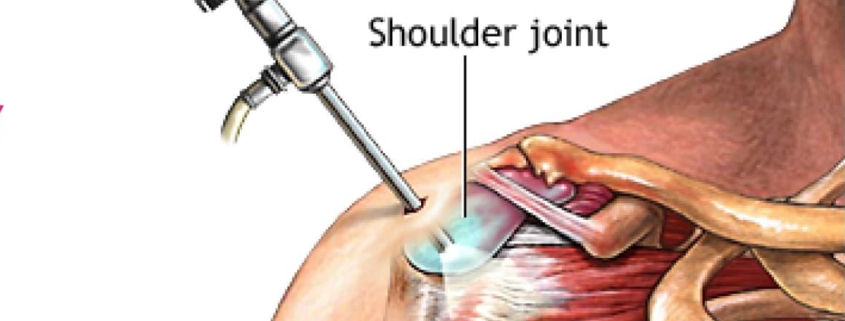
Shoulder Arthroscopy
Overview
Shoulder arthroscopy is a surgical procedure that allows doctors to view, diagnose, and treat a range of problems inside the shoulder joint. Using a tiny camera, known as an arthroscope and small surgical instruments, the procedure is minimally invasive, typically causing less pain and leading to faster recovery than traditional open surgery.
Types
Shoulder arthroscopy isn’t a condition, but a procedure that’s used to treat several different shoulder conditions. Some of these include:
– Rotator cuff repair: This surgery fixes tears in the shoulder’s rotator cuff tendons.
– Labral repair: The labrum is a cup-shaped rim of cartilage that lines and reinforces the ball and socket joint of the shoulder, which can sometimes get torn and need repair.
– Bone spur removal: Over time, extra bony growth, known as spurs, may develop in the shoulder, causing pain and limiting movement.
– Repair of ligaments: Sometimes, the ligaments that stabilize the shoulder may need to be repaired.
– Removal or repair of the bursa: A bursa is a small fluid-filled sac that reduces friction in the joints. In the case of inflammation or damage, it may need to be repaired or removed.
Causes
Arthroscopy is a treatment, rather than a disease or condition. However, there are several shoulder conditions that might necessitate the procedure. These include:
– Osteoarthritis
– Rheumatoid arthritis
– Torn cartilage or ligaments
– Torn rotator cuff
– Frozen shoulder
– Shoulder bursitis
– Shoulder impingement syndrome
– Bone spurs
Symptoms
Again, shoulder arthroscopy is a procedure meant to address symptoms you might already be experiencing due to a shoulder condition. If you have the following symptoms, your doctor may suggest shoulder arthroscopy:
– Persistent, chronic pain
- Limited range of motion
– Weakness in the shoulder joint
– A sensation of grinding or popping
Diagnosis
Before suggesting a shoulder arthroscopy, your doctor will examine your shoulder and its range of motion. They will also gather information about your medical history and your symptoms. They might also suggest imaging tests like X-rays, MRIs, or CT scans to get a clear view of your shoulder.
Treatment Options
Shoulder arthroscopy is used when non-surgical treatment options fail to bring relief. These can include:
– Physical therapy
– Rest and cease from activities that cause pain
– Heat or cold therapy
– Pain and anti-inflammatory medications
If these treatments don’t alleviate your symptoms, shoulder arthroscopy could be suitable. It often leads to quicker recovery times than traditional surgery, meaning patients can often return to work or normal activities sooner.
Living With Shoulder Arthroscopy
Once you’ve had a shoulder arthroscopy, taking care of the shoulder and managing pain is important for recovery. Here are some recovery tips:
– Take prescribed pain medications as directed
– Apply ice to the affected area to reduce swelling
– Keep your shoulder elevated to help minimize swelling
– Wear a sling if your doctor recommends it to stabilize the arm and shoulder
– Attend all scheduled physical therapy sessions and follow exercises at home
When to Seek Help
If you’ve been having chronic shoulder pain or other symptoms that prevent you from carrying out daily activities or doing what you love, it’s important to consult with a healthcare provider. If standard treatments are ineffective, shoulder arthroscopy may be a good option.
Remember, everyone’s health situation is different, and what works for one patient may not work for another. Your healthcare provider can give you a better understanding of your unique circumstances and help determine the best path for you to take for your shoulder health.
